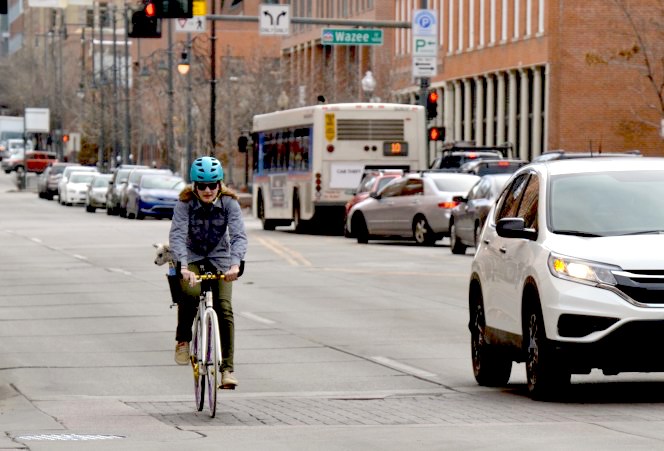It’s Up to Denver City Council to Pass a Bike-Friendly “Safety Stop” Law
A bill just cleared the Colorado Senate that lays out how local governments can bring traffic laws into alignment with reasonable cyclist behavior, like treating stop signs as yields.

Last year Republicans in the state legislature killed a bill that would have let people on bikes legally do two things they already do to stay safe: Carefully roll through stop signs and, when there’s no cross-traffic, travel through red lights after stopping.
The bill failed after opponents argued, essentially, that people can’t be trusted to grasp how traffic laws should apply differently to light, nimble bicycles than to heavy, clumsy cars.
There’s movement on the “safety stop” issue again this year, but not to change traffic law statewide. Instead, SB 144 [PDF], sponsored by Senator Andy Kerr, seeks to lay out a uniform standard for any local government that chooses to adopt a “safety stop” rule.
After the bill cleared the Senate floor 18 to 15 on Wednesday, Kerr said it should be smooth sailing in the Democrat-controlled House.
If Denver wants to enact a safety stop law — like Summit County, Breckenridge, Dillon, and Aspen have — it would be up to the City Council to act. And Denver’s rule would have to follow the standard laid out by Kerr’s bill.
The standardized rule in SB 144 says that at intersections with stop signs, cyclists should slow “to a reasonable speed” and yield to anyone with the right of way before proceeding. The default “reasonable speed” is 15 mph, but cities will retain the flexibility to change that, from one intersection to another, as long as a sign is posted.
At red traffic signals, cyclists would have to completely stop and proceed only if there’s no oncoming traffic.
The idea behind the safety stop rules is to bring the law into alignment with reasonable cyclist behavior. A University of Colorado study found that bicyclists break the letter of the law to stay safe. For example, when bicyclists get a head start at intersections, they become more visible to the drivers behind them, which helps avoid crashes in which the driver turns across the path of a cyclist in the vehicle’s blind spot.
Furthermore, bike riders’ “unenclosed and exposed position in the road allows them to see, hear, smell, and sense vibrations and assess the safety of an intersection” before proceeding, according to a 2014 white paper by the Mayor’s Bicycle Advisory Committee here in Denver. Multiple studies show the safety stop rule does not increase risk for people on bikes.


